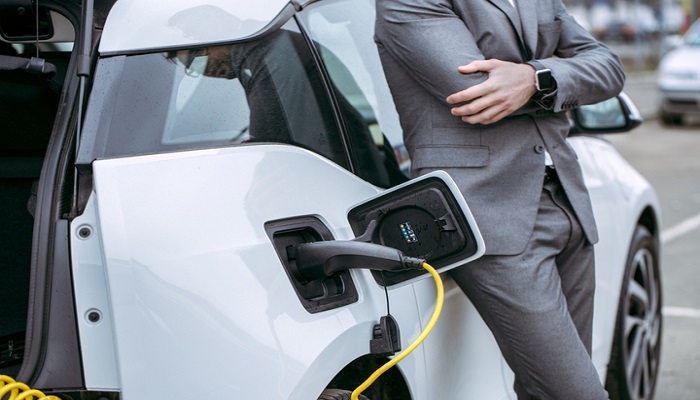Innovations In Power Electronics Defines The Future Of Electric Vehicles

11 Jun
2020
Once known as a far-fetched concept, the electric vehicle is now considered as the beacon of a sustainable future. Thanks to the efforts taken by tech giants such as Tesla, electric vehicles have become the one potential answer to the ever-increasing fuel prices and the global dependence on oil. However, the success of electronic vehicles depends on how effective power electronic components are used in it.
Power electronics refers to converting and controlling electric power in systems. Major components such as inverter, on-board charger, and converter are used in electric vehicle systems and its operability depends on it. For instance, a high voltage or current can be effectively executed by using advanced power electronic devices as they offer faster switching rates while maintaining high efficiency. According to Allied Market Research, the power electronics for electric vehicles market is expected to touch $30.01 billion by 2026, growing at a CAGR of 35.5% from 2019 to 2026. This is due to a surge in demand for energy-efficient battery-powered devices, stringent emission regulations to reduce vehicle weight and gas emission, and rapid technological improvements in electronic vehicles R&D battery technology.
However, the performance of electronic vehicles solely depends on its on-board rechargeable battery, which is still far from ideal. These rechargeable batteries are expected to offer sufficient power over a sustained period so it must have a high ampere-hour capacity. The traction batteries gained popularity as it has comparatively high specific energy and power-to-weight ratio. However, these batteries add to the overall weight of the vehicle and therefore, limit its range. The fuel–whether it is oil or rechargeable batteries–must offer the power to achieve maximum range. And compared to conventional fuel options, current battery technology has a lower specific energy, which is one of the biggest puzzles to solve.
Of all the proposed battery technology options, lithium-ion batteries are regarded as suitable over other batteries as it has higher energy density and lighter weight. Thus, the majority of R&D is focused on creating larger and higher power lithium-ion traction batteries.
Apart from on-board rechargeable batteries, the two-speed electronically-actuated manual transmission offers optimum efficiency. Moreover, the gear shift has an electromechanical transmission lock and no clutch, which maximizes acceleration while enabling a high-speed. What’s more, the first gear can take from 0–60 in mere 4 second and second gear to over 130 mph.
The advancements in the transmission are key to the future of electronic vehicles and that’s where Tesla is currently working. In fact, Tesla’s Power Electronic Module (PEM) is something remarkable and futuristic electronic vehicles would be based on this computer-controlled system. As it offers integrated power inverter and high-rate charging system, it enables regenerative braking flow through the charging systems in PEM.
The demand for electric as well as hybrid cars is growing and advanced technologies such as PEM and efficient rechargeable batteries are the keys to the future. Considering such advancements and–not to mention–the political push for electric cars, the mass adoption of it is inevitable. However, in order for these vehicles to reach a global market, there are some obstacles yet to overcome and innovations in power electronics would decide the course of its future for sure.

Koyel Ghosh
Author’s Bio- Koyel Ghosh is a blogger with a strong passion and enjoys writing in miscellaneous domains, as she believes it lets her explore a wide variety of niches. She has an innate interest in creativity and enjoys experimenting with different writing styles. A writer who never stops imagining, she has been serving the corporate industry for the last five years.
Avenue: Entire Library membership of Allied Market Research Reports at your disposal
- Avenue is an innovative subscription-based online report database.
- Avail an online access to the entire library of syndicated reports on more than 2,000 niche industries and company profiles on more than 12,000 firms across 11 domains.
- A cost-effective model tailored for entrepreneurs, investors, and students & researchers at universities.
- Request customizations, suggest new reports, and avail analyst support as per your requirements.
- Get an access to the library of reports at any time from any device and anywhere.
Related Post
-
How are Submarine Cables Transforming Global Connectivity with Enhanced User Experience?
-
Endoscopy Procedures: Transformations in Techniques and Applications
-
AI-Powered Video Analytics: How the Product Actually Works for enterprises
-
Painting Robots: Transforming Precision Coating and Creative Applications
-
Innovations in Pharmacovigilance Systems Advancing Patient Safety
-
Understanding Edge Security: Keeping Data Safe Near the Source
-
Exploring the Use and Advancements of 3D Laser Scanners in Professional Applications
-
Reinforcing Industrial Controls with Smarter Tools and Training








